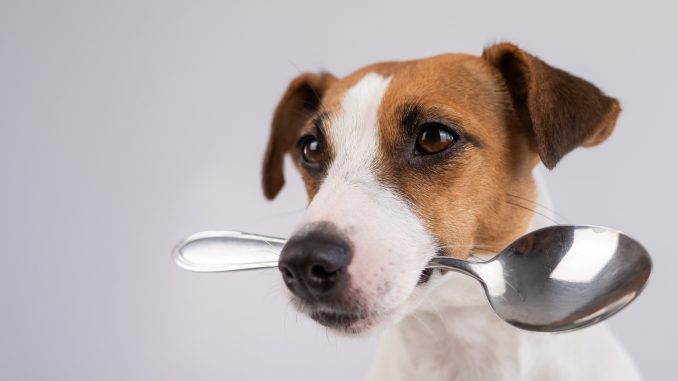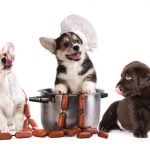
Pet foods are an important part of the consumer market. Worth further exploring! The industry is said to have started when a salesman, James Pratt of Cinncinnati was selling lighting rods. he made a trip on business in 1860 to London. He spied a number of stray dogs waiting on the muddy riverbanks for fish trimmings from the trawlers and luggers that berthed there. These dogs also enjoyed something called hard tack which was a dry biscuit made from flour used by sailors on long sea journeys.
Trade Bodies
The body that represents the European pet food industry is the FEDIAF, the European Federation for Pet Food Industry, which is based in Brussels.
In the UK, the PFMA (Pet Food Manufacturing Association) represents the industry. This trade association was established in 1970 and has over 70 member companies. It accounts for 90% of the UK pet food market.
Regulations
The pet food industry is regulated primarily by its government bodies which are supported by pet food companies. The PFMS provides advice to both these businesses and the UK government. The PFMA also works alongside FEDIAF which in turn works with the EU Commission.
All the other European pet food associations work with FEDIAF.
The PFMA structure has a number of specialist groups. The Secretariat is responsible for an Executive Committee, Review Committee, Communications Committee, Raw Materials Committee, Additives Working Group, Exports Group, Fish Group, Bird Group, Small Animals Working Group and a Veterinary & Nutrition Committee.
Pet food is covered by over 50 pieces of legislation. These cover off labelling, additives, feed hygiene, PARNUTS (Dietetics), animal by-products, GMOs and TSE (Transmissable Spongiform Encephalopathies).
There are detailed industry guidelines and codes of practice which are akin to the standards for human food. The FEDIAF has issued the following:-
- Guide to Good Practice for the Safe Manufacture of Pet Food.
- Code of Good Labelling Practice for Pet Food (communications)
- FEDIAF Nutritional Guidelines for cats and dogs, and for pet rabbits
The industry is split into segments based on the different types of pet food.
They include commercially prepared food and on the other hand homemade food. the commercially food can be split further into complete food or complementary foods such as treats, snacks and mixers. In both categories, the food is either raw or cooked. A similar split exists in terms of raw or cooked for homemade pet food.
The benefits of prepared pet foods are mainly because they are nutritionally balanced and complete in vitamins and minerals. They tend to be specific for various animals and breeds with a number that fit particular life stages. many have been well researched and tested with appropriate stages of development. They have nutritional and environmental advantages.
A number of pet foods are intended for particular nutritional purposes. These are designed for pet animals whose process of assimilation, absorption or metabolism is or could be, temporarily or irreversibly impaired, have different nutritional needs or nutrient tolerances than the average pep population at the same life stage.
Pet foods are intended for particular nutritional purposes as in dietetic pet food and are specially developed to meet particular nutritional needs of animals within a certain category, either by adapting the nutrient profile, by using or excluding specific ingredients or applying a specific manufacturing process.
A pet food is defined by the PFMA and can only use ingredients legally permitted and sourced from registered suppliers. These must follow the Feed Hygiene Regulation (183/2005).
They contain the following:-
- proteins from meats such as lamb, beef, fish and poultry
- vitamins and minerals which are added and combined in a way to produce a balanced diet
- sources of fibre and carbohydrate such as cereals and vegetables
The animal-base ingredients are often by-products of the human food industry and strictly regulated to ensure safety as in the ABP regulations of 1069/2009 and 142/2011.
Lots of fact sheets are available that discuss particular aspects of food.
Moist Food
Moist pet food is usually canned or in foil sachets and pouches, and trays. They contain on average 78% moisture in a range of 60 to 87%. They have the longest shelf-life of all at up to 24 months. From a sensory perspective, they have the highest palatability but also a high cost per calorie basis. The cans and sachet are always in-pack pasteurised usually through a full Botulinum cook.
Dry Pet Food
Dry pet food is usually packaged in bags and sacks. The moisture content is about 10% in a range between 3 and 11%. The shelf-life is still long at between 12 and 18 months. The sensory characteristics are always good. These foods have the lowest cost per calorie. It is their dryness and thus low water activity that makes them so robust.
In many cases, a palatability enhancer is added to dry kibble as a liquid or powder. This digest is produced by enzymatic action on the meat or poultry and helps improve the flavour of the foods. It is usually a protease which raises the level of amino-acids and protein hydrolysates.
The Semi-Moist
The semi-moist pet food comes in individual servings. These are mixed dry and semi-moist. The moisture content is about 32% in a range of between 25 and 35%. The shelf-life is the shortest of all pet foods between 9 and 12 months. It has high palatability but the highest cost per calorie basis.
The Treats
The treats are small rewards that are not major contributors to their total daily nutrient intake. Less than 10% of caloric intake should be from these treats.
Food Additives
Food additives are added to improve the nutritional and functional properties of the pet food. The additives are:-
- vitamins and minerals
- caramel colour
- guar gum
- antioxidants such as ethoxyquin, BHA and BHT.
Homemade Foods
Many pet owners have started making their own petfood but charities, are concerned about people making this food which could injure their pets. Dog charities are especially worried because poisoning is possble. Using alliums for example such as onions, leek and garlic are toxic to dogs and cause diarrhoea and vomiting. Cooked bones might also mean they splinter and pierce internal organs whilst rich and fatty foods cause stomach upsets. The main focus is on dog foods.
Mintel noted that from a survey of 1000 pet owners in the company’s annual pet food report, found the number of people making their own pet food, either from scratch or leftovers, rose by six per cent – from 18 per cent in 2020 to 24 per cent by 2022. Pet food purchase from shops or online fell from 94% to 89%.
Regulations
In the USA, the Association of American Feed Control Officials now sets the standards for labeling pet foods. It is up to the individual states to enforce these regulations. Each state is responsible for adopting and enforcing these regulations.
The AAFCO philosophy is to ‘provide protection for the consumer as well as the regulated industry’.
The Principal Display Panel will be the main part of the label that is displayed, presented to the customer or examined under customary conditions of display for retail sale. It shows the brand name and product name which is a legal name.
There is an ingredient statement on the information panel. It must list each ingredient, listed in descending order by weight. They must use an AAFCO defined name.
The Product or Brand Name
When the food says beef, lamb, chicken turkey etc. then it must contain a minimum of 95%.
When it states ‘chicken dinner’ or entree, platter, stew, formula or recipe then it must be a minimum of 25% exclusive of water for processing.
If it states ‘with chicken’ for example then it should have a minimum of 3% exclusive of water for processing. The mention of chicken flavour means that it has no specific percentage.
The label should also state the designator meaning the species or speciallity pet for which the food is intended and conspicuously designated on the Principal Display Panel. The Designator might be described as ‘dog food’, for adult dogs’, for kittens and feline adult.
The quantity statement on the Principal Display Panel which states it must use ‘net weight’ unit of measurement not a net volume.
Nutritional Adequacy Statement
The AAFCO regulations allow tow basic methods to substantiate claims:-
- feeding trial method (protocol)
- formulation method (calculated)
There may also be statements such as ‘This product is intended for intermittent or supplemental feeding only.’ and ‘Use only as directed by your veterinarian.’
The AAFCO Statement is the formulation method (per AAFCO protocol):-
‘(Name of Product) is formulated to meet the nutritional levels established by the AAFCO Dog (or Cat) Food Nutrient Profiles for ____.”
A natural ingredient or feed is derived solely from plant, animal or mined sources, either in its unprocessed state or having been subject to physical and/or heat processing, rendering, hydrolysis. It is not produced by or subject to a chemically synthetic process and not containing any additives or processing aids that are chemically synthetic except in amounts as might occur unavoidably in good manufacturing process.
Pet Food Recalls
Most pet foods are recalled in response to food safety concerns from the presence of harmful microorganisms, mycotoxins and other additives that are not permitted.
Mycotoxins
The sources of mycotoxins are usually fungal such as Aspergillus. In 2021, feline pancytopenia which called cats in the UK was probably due to contamination of potato flakes used in cat food with mycotoxins. The particular mycotoxins were trichothecene T-2/HT-2 mycotoxins especially diacetoxyscirpenol at levels higher than those recommended by the European Commission, while control samples contained none.
Polypropylene Glycol
Polypropylene glycol is not permitted in cat food in the USA. If it is found, there is a food alert and recall process in place. Cats that ingest the ingredient can show signs of depression with a loss of coordination, twitching muscles and spasms and an excessive urination and thirst.
There is also the possibility that as an additive, ethylene oxide (EtO) is present which has a degree of toxicity associated with it. The chemical is used in the manufacture of polypropylene glycol and may be present.
Excess Vitamin D
A known toxin in pet foods when present in high excess. Even potentially elevated levels of vitamin D prompt a recall. Purina PetCare Co., in the USA had recourse for a recall of one of its products. They stated in their press release:
“Vitamin D is an essential nutrient for dogs; however, ingestion of elevated levels can lead to health issues depending on the level of vitamin D and the length of exposure.”
“Vitamin D toxicity may include vomiting, loss of appetite, increased thirst, increased urination, and excessive drooling to renal (kidney) dysfunction.”



Leave a Reply